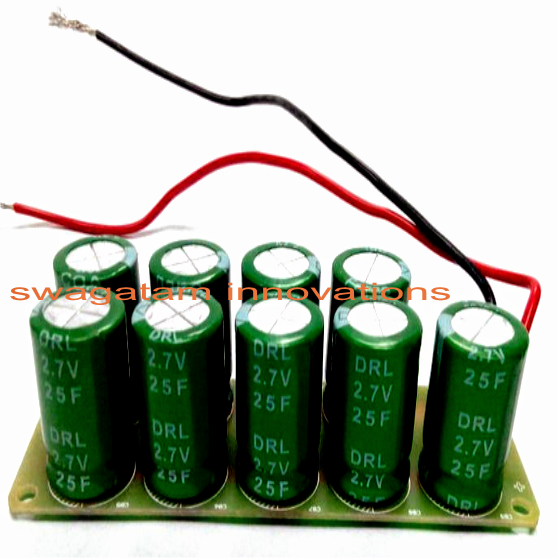The article features a basic bridge rectifier circuit which can be used for charging a bank of super capacitors by means of any appropriate hand cranked generator machine.


The way out of the much anticipated super capacitor charger circuit is very easy, it's by utilizing a bridge rectifier for the needed DC conversion across both the cycles of the AC.
Normally we understand a bridge rectifier is set up in such a way that the associated diodes turn out to be outfitted for rectifying an AC by way of both half cycles utilized across it.
The chosen hand cranked alternator device also behaves like an AC generator wherein the forward movement of the cranking generates a forward or a positive current while the retracting action in the device does the opposite and builds up a negative current across its outputs.
In case the wires of the hand cranked generator or any generator are hooked up directly with a filter capacitor which can be a super capacitor in the existing situation would charge the capacitors during the first activity and instantly release the capacitor throughout the reverse motion of the cranking, leading to a net zero charge inside the capacitors.
When a bridge rectifier is associated across such a generator as demonstrated in the diagram, both the positive and the negative currents across its output are correctly developed into a single polarity voltage that could help to charge the super capacitors essentially without inflicting any loss across the capacitors.
I have hooked up the diagram in pictorial form, please take a look
The reverse current will matter only just in case the red/black wires are changed while hooking up with the super capacitor.... the capacitors will get harmed if the current within this situation surpasses 1 amp.
the 30 amp indicates the max current persistence in standard situations as presented in the connected picture. However it will matter only if the voltage from the generator is likely to go beyond the max voltage rating of the super capacitor..if it continues to be within the capacitors voltage range the forward current limit turns into unimportant and might be disregarded....so make sure you verify the generator's maximum voltage, it ought not become more than 24 V for the mentioned super capacitor module.
The diodes in the bridge could possibly be 1N5408 for being sure total safety to the system.
The super capacitor may be charged/discharged at will thousands of times regardless of any measures or care.
Leave a Reply